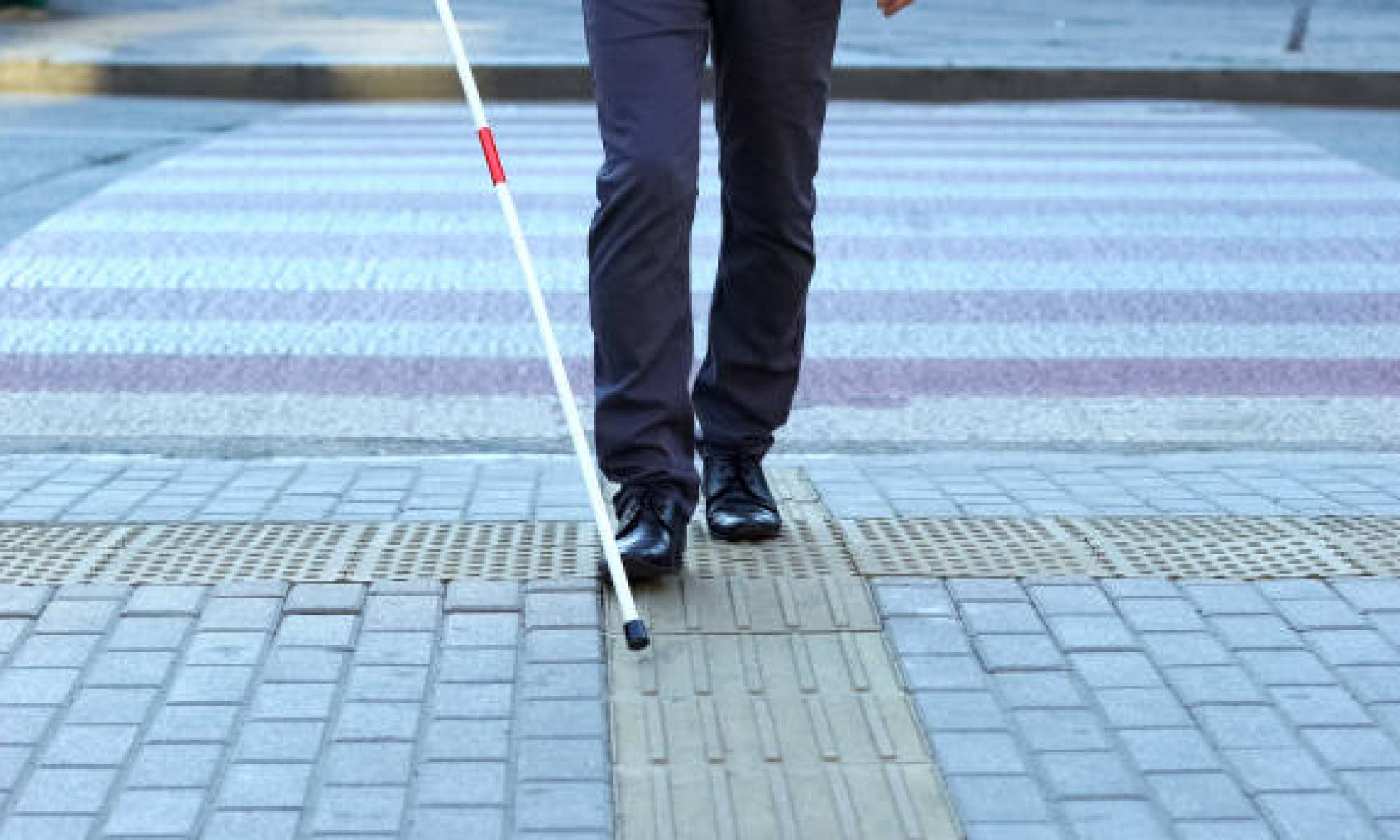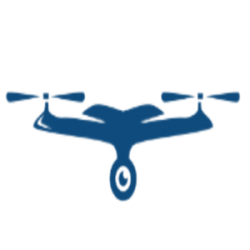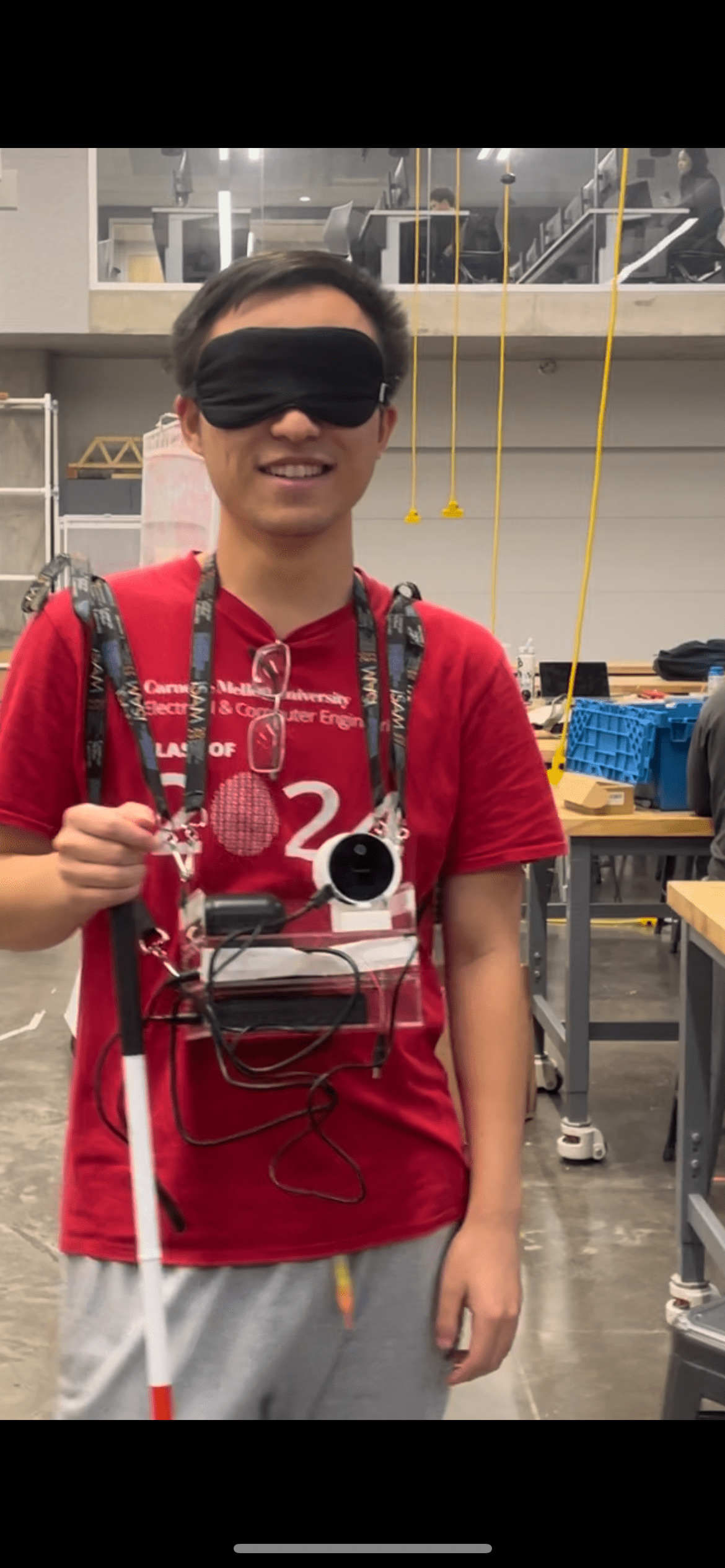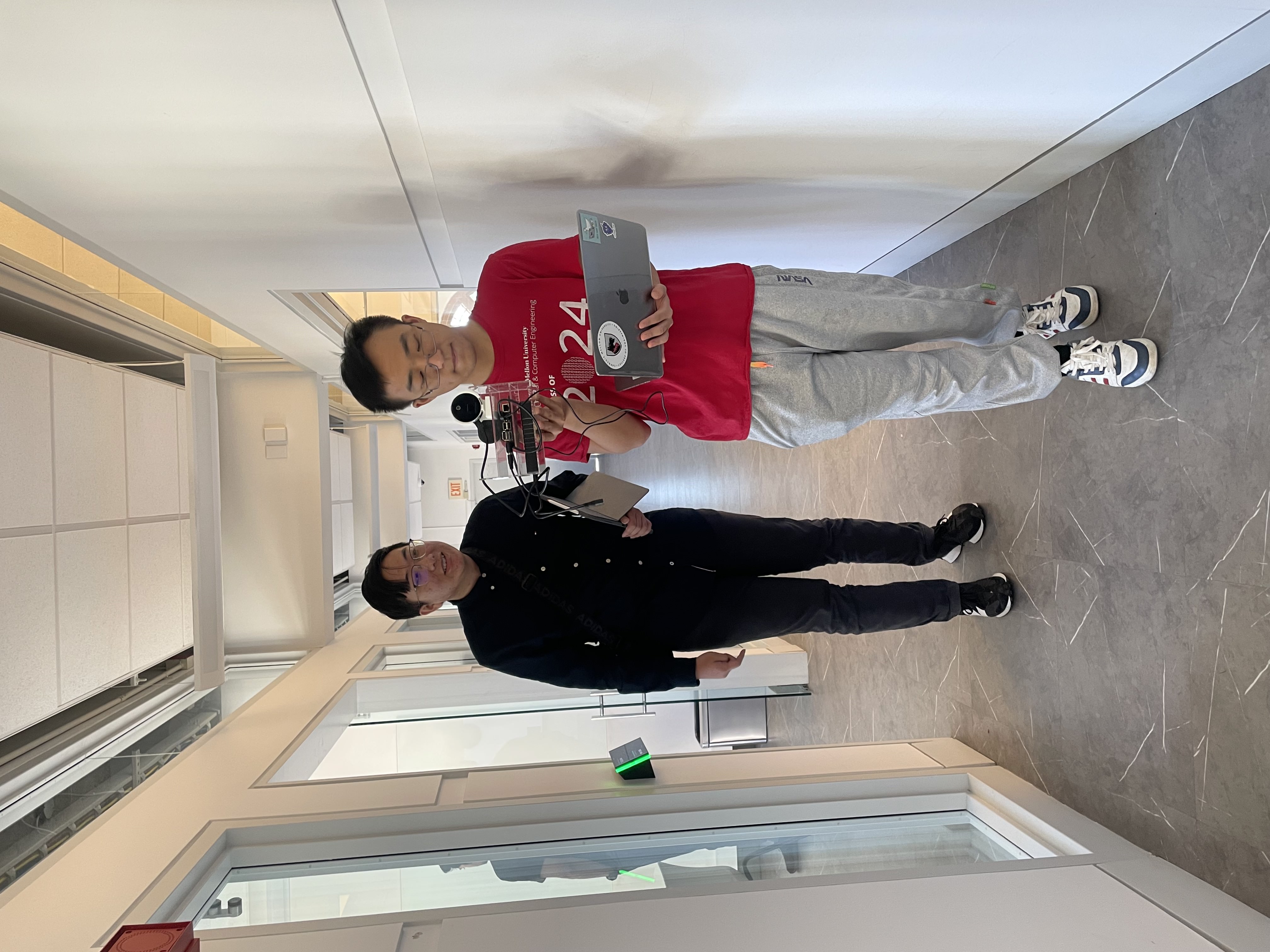As this the last week of the course, there is no significant risks that could jeopardize the success of the project. We have already completed the project last week (include testing). Due to this, I don’t think there is any risk needs to be managed other than taking care of the system such that it does not break in presentation. A contingency plan for this would be always hold the system in both hands.
No changes were made to the existing design of the system. All the integration and other testings have been finished last weekend. No update in schedule is needed.
Regarding the group question, our team has done unit test for each portion of our system and done integration test in latency and accuracy. A list of tasks we have done could be found below:
- Battery Live Unit Test
- Object detection model unit test in accuracy and latency for all different models we have tried.
- Distance measuring script latency and accuracy unit test.
- Speaker latency and voice quality unit test.
- System Weight Test
- Integration Test for whole system in latency and accuracy
For each test mentioned above, our respective findings and changes are:
- Found battery lasted more than 2.5 hours => No change.
- Found pre-trained model has bad performance in chairs, tables => trained another model explicitly for chairs, tables, etc.
- Found latency is too high => revise algorithm using Numpy and pixel selecting.
- Found latency and voice quality is optimal => No change
- Found weight less than 5 pound => No change
- Found latency < 500ms in average and accuracy >= 85% for big close objects => No change
These indict that our model satisfies all the use case/design requirements we have set at the start of the semester.





